Types of Cables - A Complete Guide
Types Of Cables
Cable is that the medium through which data/information usually transfer from one network device to another. In this article we will discuss about, what is cable? or definition of cable. What are different types of Cables and Wires? What are different types of network cable, electrical cables and computer cables? What are types of electrical wiring with its chart? difference between wire and cable. Which type of cable is used for underground service connection? So let’s see,
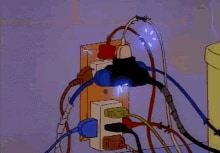
What is a cable?

Definition: A cable may be a thick wire, or a gaggle of wires inside a rubber or plastic covering, which is employed to hold electricity or electronic signals. The meaning of cable is “an insulated wire or wires having a safeguarding casing and applied for transmitting electricity or telecommunication signals”. The connection between your PC (computer) and your internet service provider is an example of a cable.
Also check-
What is Electrical cable?
Definition: The cable that's used for the transmission and distribution of electric power is understood because the electric power cable. It’s used for the transmission of high voltages in places where overhead lines are impractical to use.
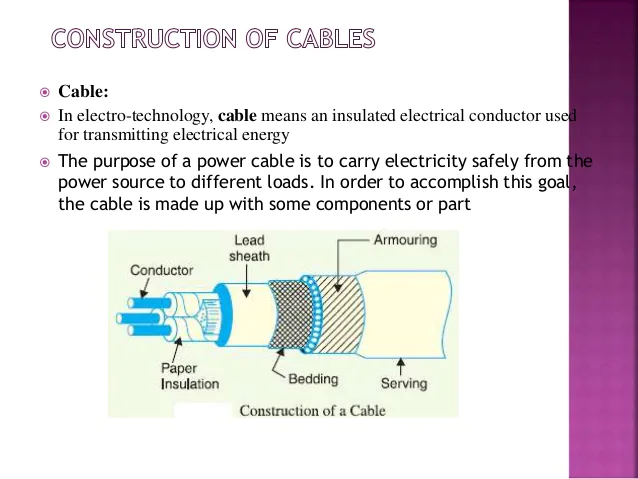
The power cable has three main components, namely, conductor, dielectric, and sheath. The conducting path for the present within the cable is provided by the conductor. The insulation or dielectric resist the service voltage and isolates the live conductor with other objects. The sheath doesn't allow the moistures to enter and protects the cables from all external influences like chemical or electrochemical attack and fire.
Types of Cable
Various different types of Cables are used everywhere for different applications. Not all cables perform the same and equal application. The function of a cable depends upon the different kinds of cable. Like Electrical cable, Power cables and Computer cables.
Related Topics Link, |
Different types of Electrical cables:
The electrical cables are made up of aluminum or copper wires protected by an insulating coating which can be made up of synthetic polymers. So following are the types or electrical cable type list:
Network cables: Network cables are used to connect different components in a networking system. It is also known as data communication type of cable. Based on the size and structure of the systems, different types of network cables are used. These are listed below,
Coaxial Cables:
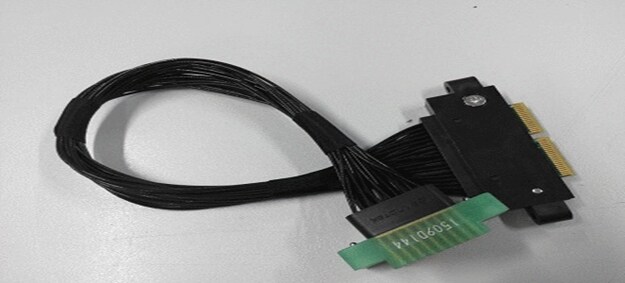
This cable (also called coax) contains a conducting core, surrounded by another conducting layer. Both the layers are separated by a dielectric or insulator within the sort/kind of a coaxial cylinder. Shown in diagram
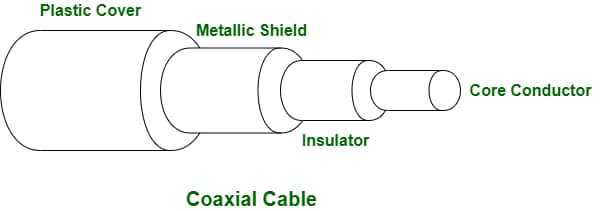
The entire setup is given an outer jacket for cover. Coaxial cables are wont to transmit high-frequency signals with minimal energy loss in several devices like televisions, radio transmitters, antennas and lots of more.
Twisted Pairs: Two cables are twisted in conjuction and color-coded. As compared to a pair of untwisted cables, the twisted one has less possibility of crosstalk or interference. These cables are utilized in Ethernet networking systems.
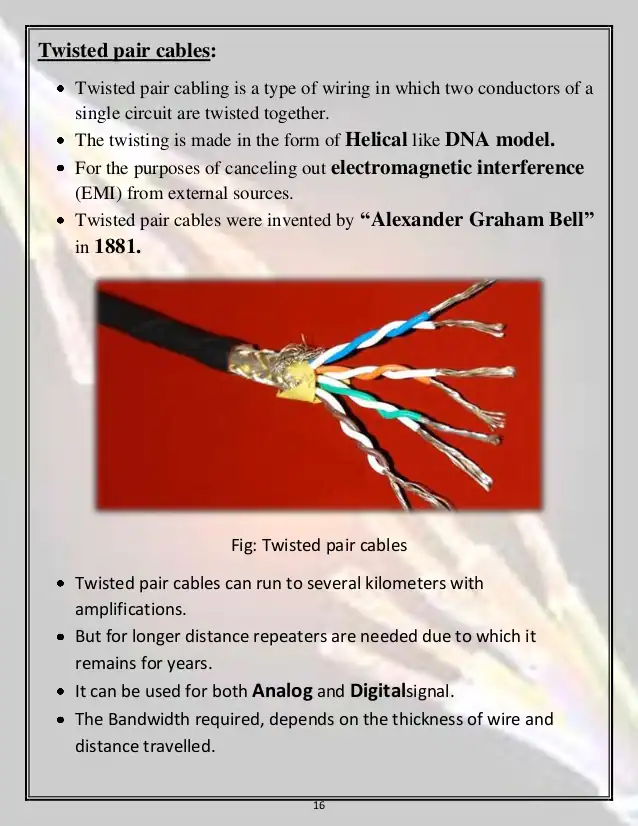
There are two types of twisted pairs: Shielded twisted pair and unshielded twisted pair. The best example of twisted pair cables are this cables are utilize in telephone lines and low speed data cables.
Optical Fibers: Fibers have glass cores surrounded by some protective layers. These cables use total internal reflection to transmit light and therefore have almost zero energy dissipation. Optical fiber has a core inside a cladding. The covering/casing is optically rarer than the core. The transmitting electromagnetic wave reflects in the core-cladding interface several times. Optical fibers can be classified further in two types, which are multi-mode fiber (short-range) and single-mode fiber (long-range).
Patch Cable: Patch cables are used to connect or “patch” different devices/information.
Internet Cables: Types of internet cables are also known as ethernet cables (shielded and twisted type). Ethernet cables attached to a computer or a game console to a modem. These cables transmit information across the internet. Some cables, called “cross-over cables” can attach with two devices.
Power Cables: What is a power cable? Electrical Power cable assemblies are wont to transmit electric power. These are often used as permanent wiring in buildings. Power line types are cord, extension cable, twisted, shielded, extensible, communication cable, and lots of more. These are all the types of power cables. These cables are often used overhead or buried underground.
Types of Computer Cables: Types of computer cables are power cable and data cable. Power cords are used in the charging of a computer or a laptop. Data cables can be of DVI, VGA, or HDMI types. Data cables are used to transfer multimedia from one device to another.
What type of cable is used for underground service connections?
Low tension 3 ½ core cable – This kind of cable is utilize or used for underground service connections.
Classification of Cables and colours
Different colors of wires are used for various purposes. In DC circuits, the colours are,
Red: Wires for positive current.
Black: Wires for negative current.
White or Grey: Ground wires.
For AC circuits (power 120/208/240 Volts),
Black: Phase 1 lines are colored black. These wires are for power generation.
Red: Phase 2 or transmission wires.
Blue: Phase 3 or power distribution wires.
White: Neutral wires.
Green or Green with Yellow Stripes: Ground wires.
Also Read:
What is a wire?
Definition: A wire may be a flexible metallic conductor, especially one made from copper, usually insulated, and wont to carry current during a circuit. ... A wire may be a flexible metallic conductor, especially one made from copper, usually insulated, and wont to carry current during a circuit.
Different types of wire:
Rubber Wire/cable: It can be obtained from milky sap of tropical trees or from oil materials.
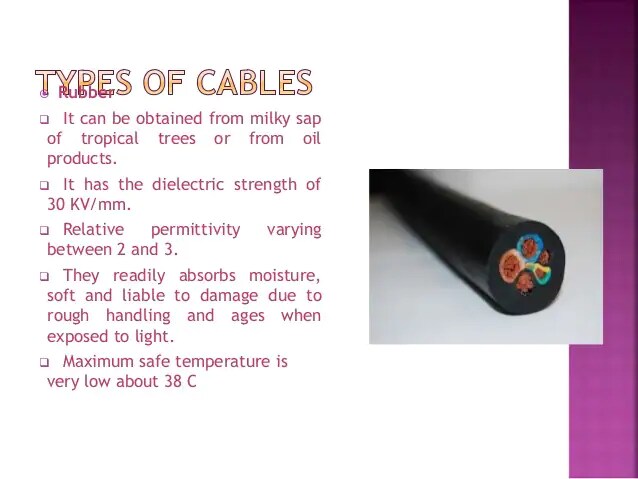
It has dielectric capacity of 30 KV/mm. Susceptible todamage due to rough handling and ages to exposure light.
Vulcanized India Rubber Wire (Moderate voltage cables): It can be made from mixing pure rubber with mineral compunds that is zinc oxide, red lead and sulphur and heated up to
150C.
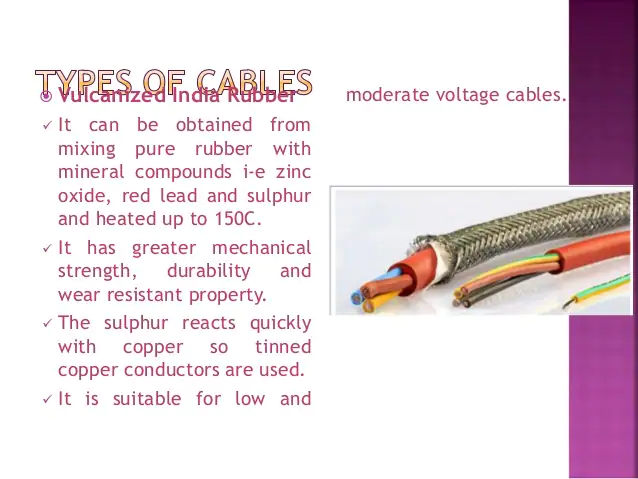
Polyvinyl Chloride (PVC): This product has good dielectric strength, high insulation resistance and high melting temperatures. It is inert to oxygen and almost inert to many alkali and acids. PVC steel wire armored.
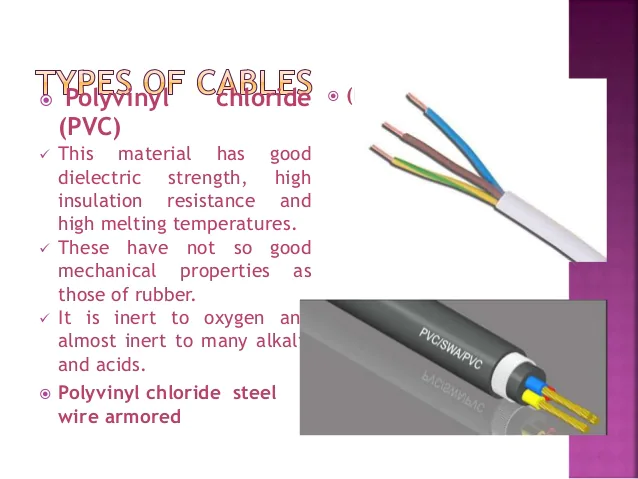
Mineral Insulated copper clad cable/wire: It is kind of electrical cable which is made by copper conductors in the copper sheath, insulated by inorganic magnesium oxide powder. The name is often abbreviated to MICC MI cable is made by internal copper rods inside a circular copper tube and filling
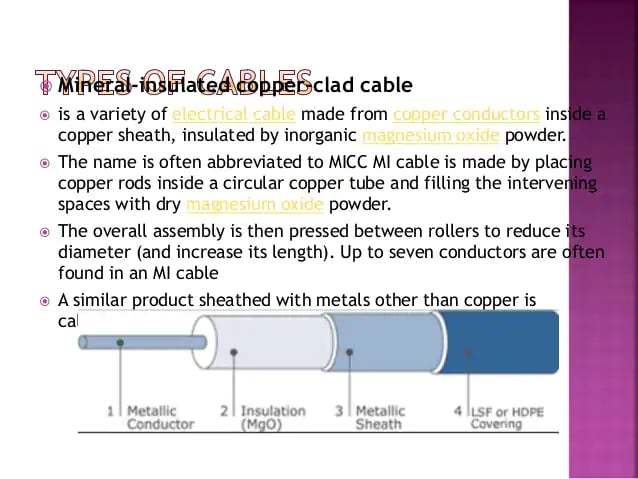
the intervening spaces with dry periclase powder. the general assembly is then pressed between rollers to scale back its diameter. CTS cable full form is Cabe Tyre sheath wire. Up to seven conductors are frequently found in an MI cable. Here I show you, chart of electrical wire:
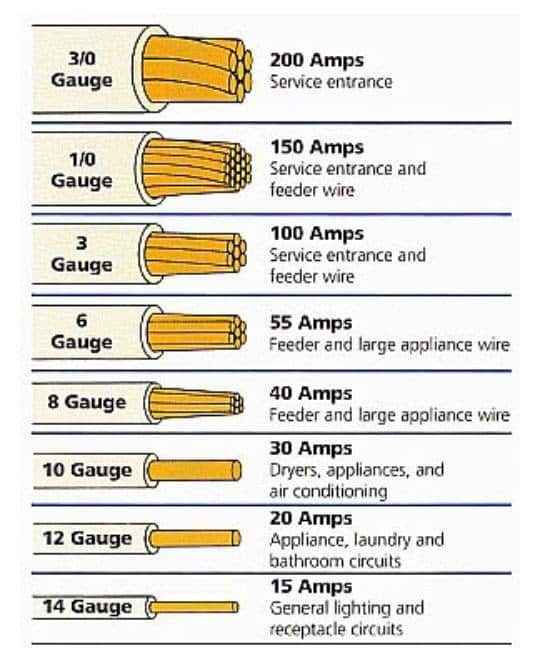
Types of copper wire are:
Beryllium Copper wire.
Copper Alloy wire.
Copper Clad Aluminum wire.
Copper Clad Steel wire.
Copper Nickel & Nickel Plated Copper wire.
Oxygen-Free Highly Conductive Copper (OFHC) wire.
Titanium Clad Copper wire.
Difference between Wire and cable
| Wire | Cable |
| Single conductors | Multi conductors |
| To bear mechanical loads, to gain electricity and telecommunications signals, heating, jewelry, clothing, mesh, automotive or industrial manufactured parts, pins, needles, fish hooks, bulbs. | Power transmission, to gain electricity and telecommunications signals |
| Types of wires are Solid wire, and stranded wires | Types of cable are Twisted pair cable, coaxial cable, multi conductor cable and fiber optic cable. |
| Its advantage is Solid wires are better for use in higher frequencies, offer low resistance. Stranded wire represents higher resistance to metal fatigue. | Advantage of cable is Higher strength, heavy duty, insulated. |
Also read -
- NCERT Solutions for Class 11 Physics
- NCERT Solutions for Class 12 Physics
- NCERT Solutions for All Subjects
NCERT Physics Notes:
Frequently Asked Questions (FAQs)
When the cable is buried within the ground for the transmission and distribution of the electrical power, it's referred to as underground cable. this is often utilized in densely populated areas.
It depends on the voltage.
By using the method of armouring, the cables are often shielded from mechanical injury.
Broadly cables are constituted by a conductor, one or multiple insulating layers, and single or multiple sheath layers. The wire during a cable carries electricity whereas the insulator and therefore the sheath give protection to the cables from unintended circuit paths and chemical reactions. Optical fibers are made from a transparent core, a rarer cladding, and multiple protective layers (jacket).
The basic key difference between wires and cables is that a wire is a single one conductor whereas a cable is a bunch of conductors. Even though these conductors created by a common products- copper or aluminium. Usually, the wires are bare and are twisted. But, some of the wires are covered with thin PVC layer.